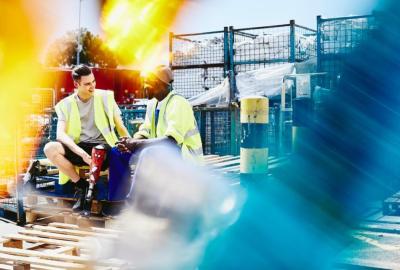what is building information modelling (BIM)?
BIM is software that can be used to create 3D fully-functional virtual replicas of buildings and infrastructure. Creation with software prior to the building process allows ultimate seamlessness in technology, and efficiency in maintenance.
It is a way for the designers, construction team, maintenance and client to all see a building before it is built and have communication before construction, allowing for cohesion between departments.
The software creates far more than a basic model; it has the capacity to design an entire piece of architecture with attention to even the tiniest aspects.
For example, the facilities manager could advise on technical aspects like lights and central heating or materials (e.g. insulation, double glazing) to ensure the building has qualities that will aid its maintenance.
Almost 20 years into the 21st century and so far there is no sign of any hover cars. We haven’t even perfected the hoverboard (ie. one without wheels).
But while hovering motorways are some way off, we may be edging a towards a sci-fi existence and a 2001: A Space Odyssey route with the ever-increasing popularity of Building Information Modelling, or BIM.
Less terrifying than 2001’s omnipresent Hal, BIM is being implemented across the UK to aid both the creation of new buildings and help with the retrofitting of older builds. It can assist with the construction, designing and maintenance of a building and can be used to correctly implement smart technology around the home. It has become so popular as a method of design that 88% of industry leaders and government figures across the UK believe that BIM is a priority when creating the businesses and organisations of the future.
BIM for security and stability.
This collaborative tool can be used for new builds, but also to retrofit old properties. It enables developers to troubleshoot any potential problems and building issues, but to also fully risk asses the building before construction.
There are health and safety test procedures that can be run, for example BIM allows crowd behaviour to be analysed and thus a fire modelling capability to be predicted, meaning that designs are optimised for public safety.
A government report suggests we may be able to safeguard both commercial and residential buildings by using BIM.
future of business information modelling.
Despite a large majority of companies believing that BIM is the future, just 13% of UK companies say they are actually ready to deal with the ‘digital disruption’ to traditional methods of construction.
The main reason for this is that the technology is still in its early phase and remains expensive. The cost of training staff members only adds to this expense.
However, while the initial investment in the technology might be high, the benefits are projected to outweigh the cost disadvantages in the long-term as savings will be made through BIM’s preventative measures.
BIM has the capacity to eliminate mistakes and faults in the construction and maintenance of a building meaning it has a better chance of long term survival. This also saves on waste and building materials that might be unneeded or in excess.
rewiring roles.
There is no doubt that BIM will become more integral in our construction and infrastructure projects.
Changes are being enforced, through legislation, for a four year programme for sector modernisation with the key objective of reducing both costs and the carbon burden from construction BIM is an important step towards a cohesive and communal way of development that will revolutionise the way infrastructure is created.
BIM technology has stepped to the forefront of design and, like Hal, it’s beginning to control more and more aspects of our homes.

